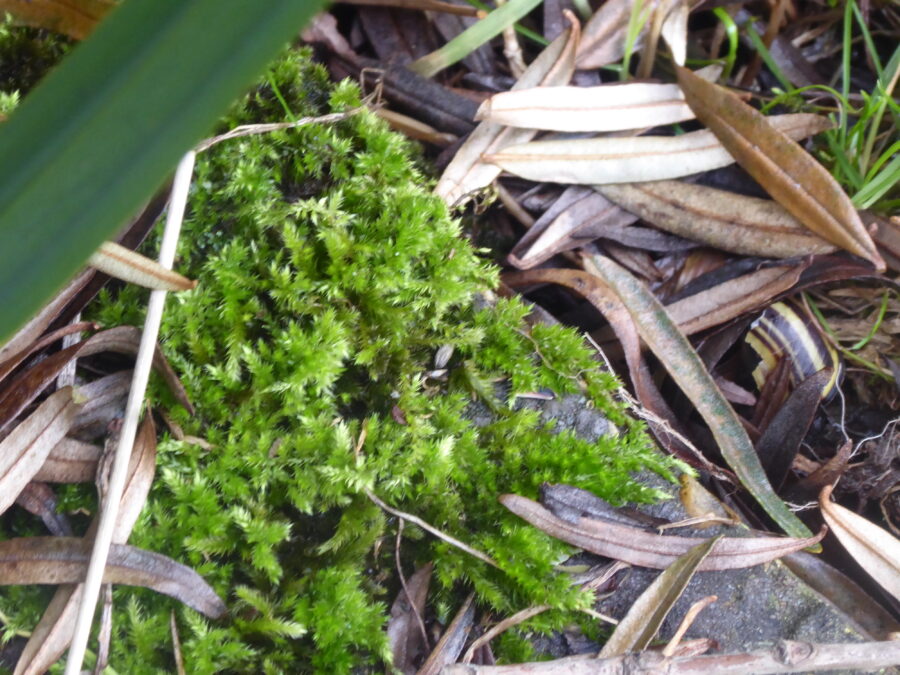It’s still difficult to get down into the watermeadow, as it remains flooded. I’ve seen a few things on the ramp and steps on the right-hand side, but rather neglected the stone steps down on the left under the sea buckthorn. I spotted the small earthworm. I hadn’t seen a worm down there so far and I was quite pleased. There are nearly 30 species of earthworm in the UK, divided into three behavioural types:
- Epigeic – living above soil level
- Endogeic – living below the ground
- Anecic – living below the ground but finding food above
This one, being small and reddish, was possibly a compost, or tiger worm, which lives above soil level. Then I noticed that it was worming its way across some moss, and I realised that that there was a whole section of plant-life that I had overlooked!
Springy turf moss (Rhytidiadelphus squarrosus) – is a soft, bright green mat, with short red stems. It is commonly found on lawns and damp woodland and is also known as ‘electrified cat’s tail’ moss from the stems which shoot out in all directions.
Further down the steps was a patch of velvety, mossy fronds. I think it is a type of Feather Moss. I’m not completely sure what type it is but it is likely to be Rough-stalked feather moss (Brachythecium rutabulum), which is also known as ‘ordinary moss’, as it is another of our most common moss species. It has pointed leaves and branching stems and can be found in woodlands, hedgerows, and lawns.

